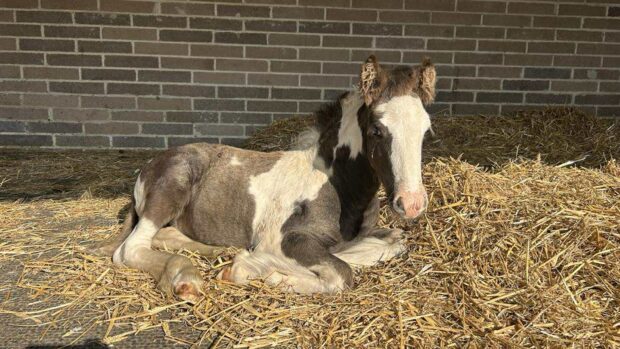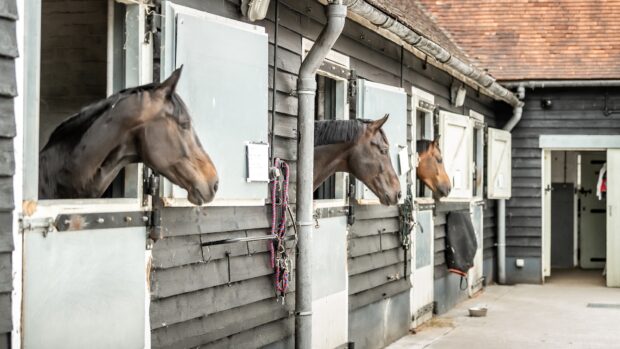A bill that would make it illegal to knowingly take horses across the US border for slaughter has taken its first steps to becoming law, although “significant concerns” have been raised over whether this could replace one form of suffering with another.
The John Stringer Rainey Safeguard American Food Exports (SAFE) Act, S 2006 would amend Title 18 of the US Code to make it illegal for anyone to knowingly transport, buy, sell, possess, ship or receive any horse with the intent of slaughtering him for human consumption.
It was introduced on 27 June by senators Bob Menendez, Lindsey Graham, Sheldon Whitehouse and Susan Collins.
Roly Owers, chief executive of World Horse Welfare, told H&H that on the face of it, the introduction of the bill is a positive step for equine welfare, but the charity does have some “significant concerns”.
“The slaughter of horses will always, and should always, be an emotive topic,” he said. “However it is important to understand the full context and to focus interventions on treating the causes of any welfare abuses rather than the symptoms.”
The move is significant as the US does not have any equine slaughterhouses — the last three shut their doors in 2007. This means horses going for slaughter face often lengthy trips to either Mexico or Canada.
According to the American Society for the Prevention of Cruelty to Animals, an average of 137,000 horses were taken over the borders to slaughterhouses annually between 2012 and 2016.
The organisation is against horse slaughter and argues that even if there were facilities in the US, the geography of the country would mean many would still face long journeys.
Mr Owers said that in the US and many other countries there are “simply too many equines and not enough good homes”.
“Furthermore, with no active slaughterhouses in the USA the journey for these horses is often long and in poor conditions taking them across country borders, possibly leaving behind regulations that protect their welfare,” he said.
“Banning the trade and transport of horses for slaughter could just replace one form of suffering with another — as the fate of these horses is far from secure and it may see them being left abandoned without appropriate care or for the equine slaughter trade to be driven underground.
“World Horse Welfare believes that it is right for owners to have the option to send their horse to a slaughterhouse as it is possible for equines to be slaughtered humanely, but it is vital that all stages of the process are regulated – most especially the transport and slaughter.
“So the primary causes of this situation are the over-supply of equines in the US and the absence of any equine identification system, coupled with a lack of appropriate and enforced transport regulation and the absence of any slaughterhouses.
“This is where the focus of any interventions need to be in the first instance.”
An ASPCA spokesman told H&H the organisation “strongly supports” the act.
He added that the ASPCA understand World Horse Welfare’s point that banning export for slaughter could replace one form of suffering with another, but does not agree with it.
“While we do not agree with this assessment, we welcome and invite groups that believe this way to partner with us as we further develop the programs and provisions they identify as missing within the equine world that would cause horses to face any of those risks,” said the spokesman.
“While there are likely always going to be horses who may face neglect, these are not necessarily the same horses who go into the slaughter pipeline. As long as this pipeline is open, owned horses are at risk of being stolen or deceptively brokered into it.”
The ASPCA states that an average of 137,000 US horses were transported to slaughterhouses in Mexico and Canada between 2012 and 2016, but added the number has been on the decline in recent years. ASPCA figures also state the number dipped to just under 80,000 in 2017.
“Fortunately, several promising indicators show us that horses have a growing set of options and should never end up in a slaughterhouse — in the U.S. or abroad,” added the spokesman.
“In 2017 the ASPCA, in partnership with Edge Research, found that there are 2.3 million adults who have both the resources and desire to adopt a horse. This data shows that we can find safe homes for approximately 1 million horses who are currently going to slaughter at least through the next decade.”
The organisation also offers support for owners who want to keep their horses but are struggling, and has a rehoming facility.
“The ASPCA’s strong support for the SAFE Act is based on the notion that until we close the legal loophole, this lifesaving work won’t be enough,” said the spokesman.
“The practice must be banned to force behavioral changes in the marketplace and to enable at-risk horses to get the help they need.”
For all the latest news analysis, competition reports, interviews, features and much more, don’t miss Horse & Hound magazine, on sale every Thursday




